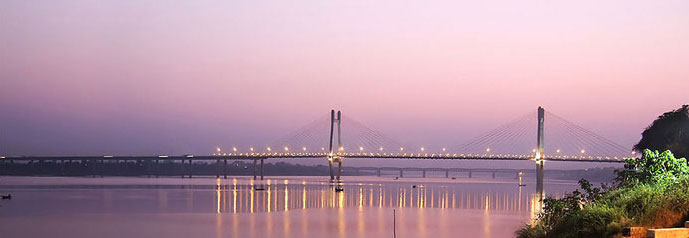Cleaning Ganga has been one of the main objectives of Narendra Modi government. After coming to power in 2014, PM Modi announced the Namami Gange mission with a three-point objective to clean the Ganga. This objective will work to ensure continuous flow, unpolluted flow and restore the ecological and geological integrity of Ganga and completely clean the river by 2020.
In a recent development from Kanpur, River Ganges is reported to be freed from Asia’s largest Sisamau drain as engineers have been successful in diverting its water. Sisamau is Asia’s largest and 128 years old drain that used to release huge waste in the river Ganges. On Tuesday, sewage diverted from Bhairav Ghat reached the Jajmau sewage treatment plant and with this, one of Namami Gange’s important projects is marked complete.
Earlier, approximately 14 crore liters of sewage was being dumped into the Ganges of which 8 crore liters is set to be diverted towards the STP i.e. Sewage Treatment Plant. It was a daunting task for the engineers to even manage 6-crore litres of sewage that was being dumped in the Ganga, as the force of the drain was same as any other canal. It was difficult to pump the sewage and channelize it through a slope to a comparative high point, with the distance being 9.5 kilometers.
Prior to this, Jal Nigam was successful in sending the contaminated water, that was earlier being tapped from Muir Mill and Nawabganj drains, to Jajmau treatment plant. With completion of this project, the authorities have at least reduced the contaminated water by 2.15 crore litres which earlier was dumped in the Ganges. Authorities have claimed that they also have stopped the leakage of contaminated water from Dabka drain by connecting a 6-metre long pipe.
65 lakh litres of water from Muir Mill drain and 1.5 crore litres of Nawabganj drain will be sent to Jajmau Treatment plant for purification and then be released into the Ganges. Dabka drain earlier used to release 30 lakh liters of contaminated water on a daily basis in Ganga since it did not get complete sewer line. But now with proper mechanism, the sewer line is set to close the drain and thus, contaminated water will be sent to sewage treatment plant.
The National Commission for Clean Ganga, the implementation wing of National Ganga Council was set up in October 2016 under the River Ganga (Rejuvenation, Protection and Management) Authorities order 2016. ‘Namami Gange’ is an Integrated Conservation Mission, approved as ‘Flagship Programme’ by the Union Government in June 2014 with a budget outlay of Rs.20,000 Crore to accomplish the twin objectives of effective abatement of pollution, conservation and rejuvenation of River Ganga.
The main objectives of the Namami Gange Programme include sewage treatment infrastructure, river-front development, river-surface cleaning, bio-diversity, afforestation, public awareness, industrial effluent monitoring and Ganga Gram.
It was not an easy task for the engineers of Jal Nigam and Namami Gange Project to divert that quantity of contaminated water but with hard-work and commitment, they have been able to achieve what at one time looked impossible. Under the leadership of PM Modi, Ganga rejuvenation does not seem a far-flung idea.
